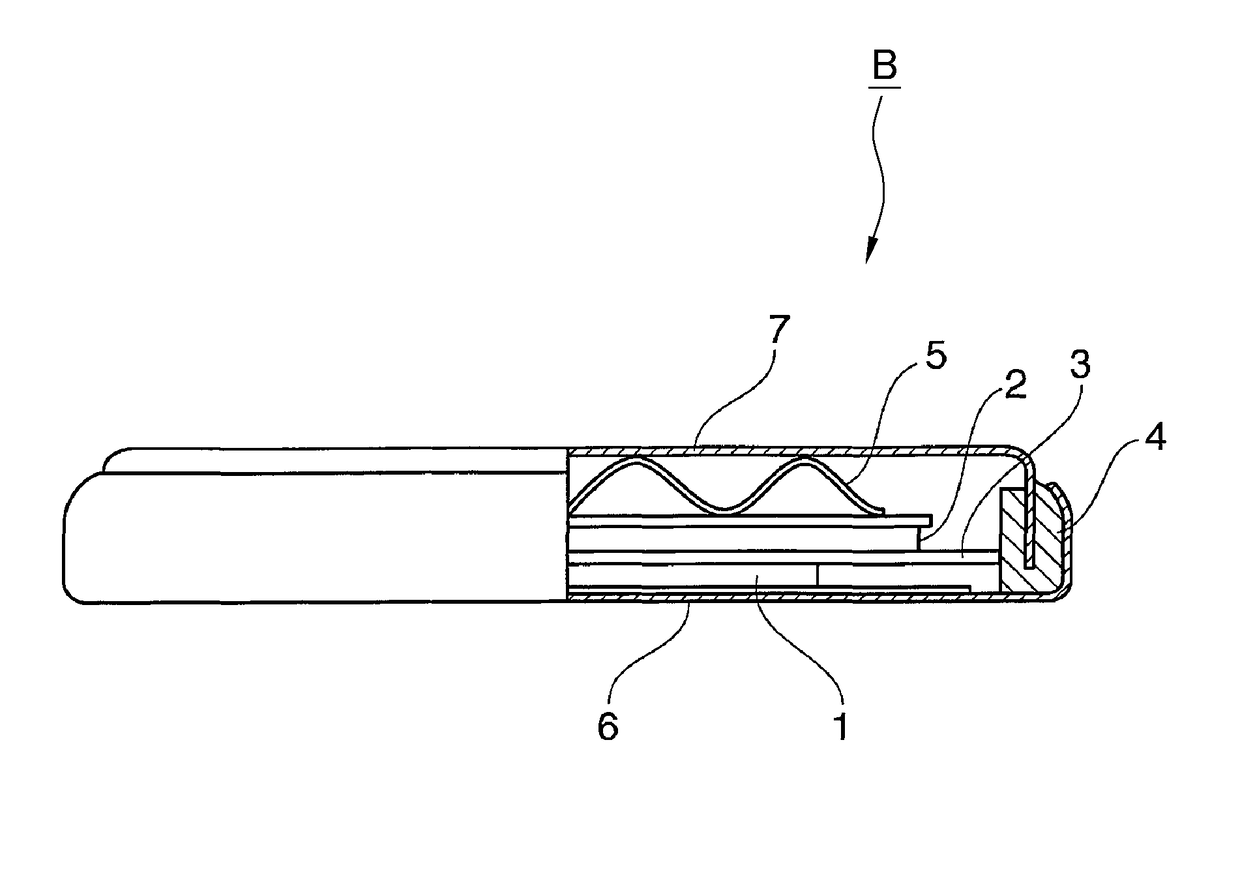Positive electrode material for nonaqueous electrolyte secondary battery and method for producing the same, and positive electrode composite material paste, and nonaqueous electrolyte secondary battery
a nonaqueous electrolyte and secondary battery technology, applied in the direction of wound/folded electrode electrodes, sustainable manufacturing/processing, nickel compounds, etc., can solve the problems of difficult stable application to a charge collector, increased viscosity of the composition, and serious consideration of the resistance required for increasing output, so as to maintain the charge and discharge capacity and high-output characteristics of the secondary battery. , the alkalinity of the positive electrode composite material paste can be easily
- Summary
- Abstract
- Description
- Claims
- Application Information
AI Technical Summary
Benefits of technology
Problems solved by technology
Method used
Image
Examples
example 1
[0108]A positive electrode material was prepared using a lithium metal composite oxide obtained by a known technique as a base material. Specifically, a composite hydroxide powder having a composition in which the ratio of Ni, Co, and Mn atoms is 1:1:1 and lithium carbonate were mixed and fired so as to satisfy Li / Me=1.03, thereby obtaining a lithium metal composite oxide. The lithium metal composite oxide and an ammonium tungstate powder were mixed together to satisfy the atomic ratio (Ni+Co+Mn):W=100 : 0.133, and then the mixture was mixed for 10 minutes using a shaker mixer (WAB, TURBULA T T2C) to prepare a positive electrode material.
[0109]Five (5) g of the obtained positive electrode material was weighed, and then dissolved in 100 mL of pure water. After 10 minutes of stirring with a stirrer or the like, the mixture was left to stand for 30 minutes. The pH of the supernatant fluid at 25° C. was measured and was found to be 11.7.
[Analysis of Excessive Lithium]
[01...
example 2
[0116]Except for mixing ammonium tungstate so as to satisfy the ratio (Ni+Co+Mn):W=100:0.278, a positive electrode material was obtained in a manner similar to Example 1. The positive electrode material was evaluated similarly to Example 1.
example 3
[0117]Except for mixing ammonium tungstate so as to satisfy the ratio (Ni+Co+Mn):W=100:0.366, a positive electrode material was obtained in a manner similar to Example 1. The positive electrode material was evaluated similarly to Example 1.
PUM
| Property | Measurement | Unit |
|---|---|---|
| pH | aaaaa | aaaaa |
| temperature | aaaaa | aaaaa |
| temperature | aaaaa | aaaaa |
Abstract
Description
Claims
Application Information
 Login to View More
Login to View More - R&D
- Intellectual Property
- Life Sciences
- Materials
- Tech Scout
- Unparalleled Data Quality
- Higher Quality Content
- 60% Fewer Hallucinations
Browse by: Latest US Patents, China's latest patents, Technical Efficacy Thesaurus, Application Domain, Technology Topic, Popular Technical Reports.
© 2025 PatSnap. All rights reserved.Legal|Privacy policy|Modern Slavery Act Transparency Statement|Sitemap|About US| Contact US: help@patsnap.com


